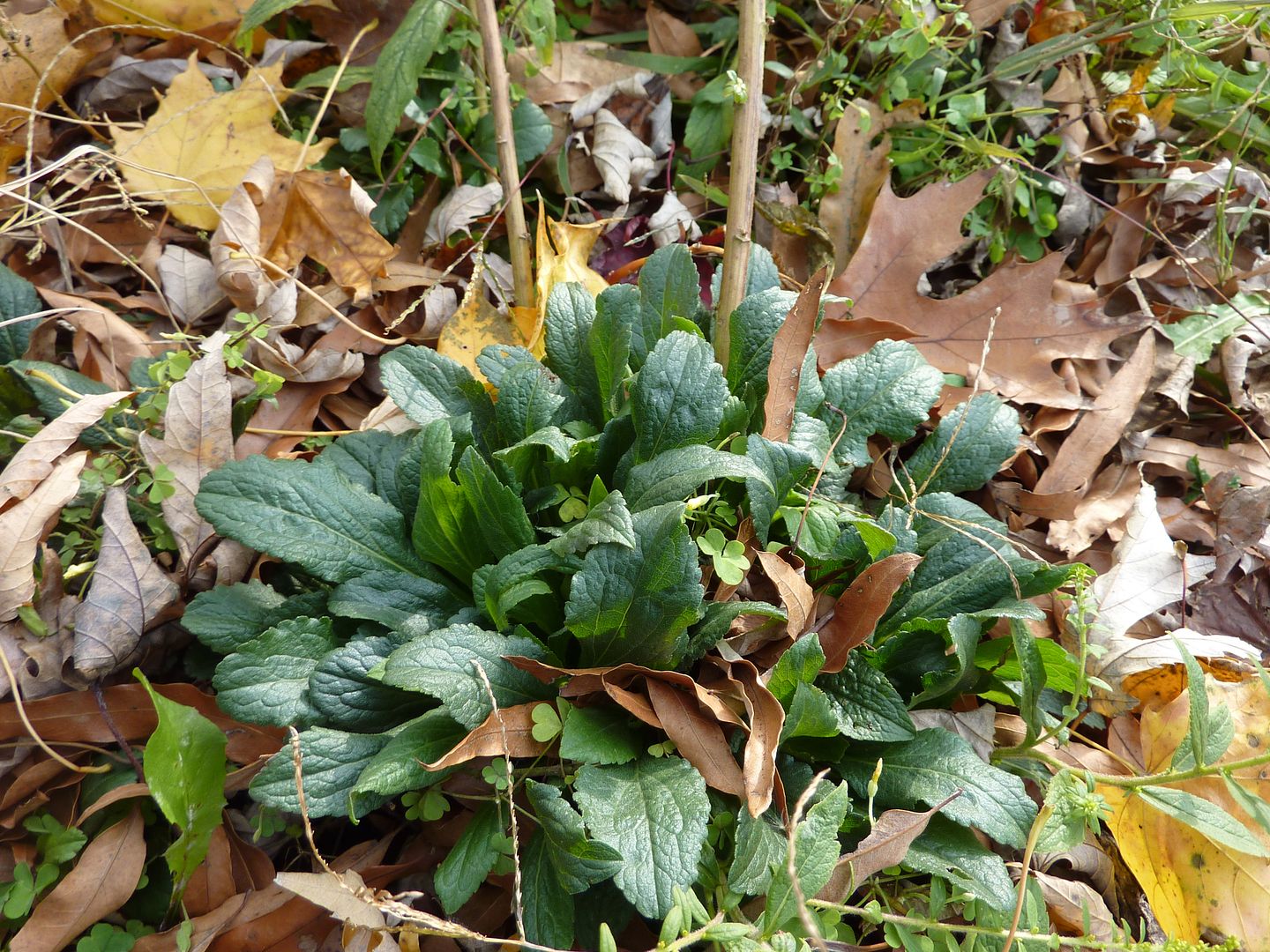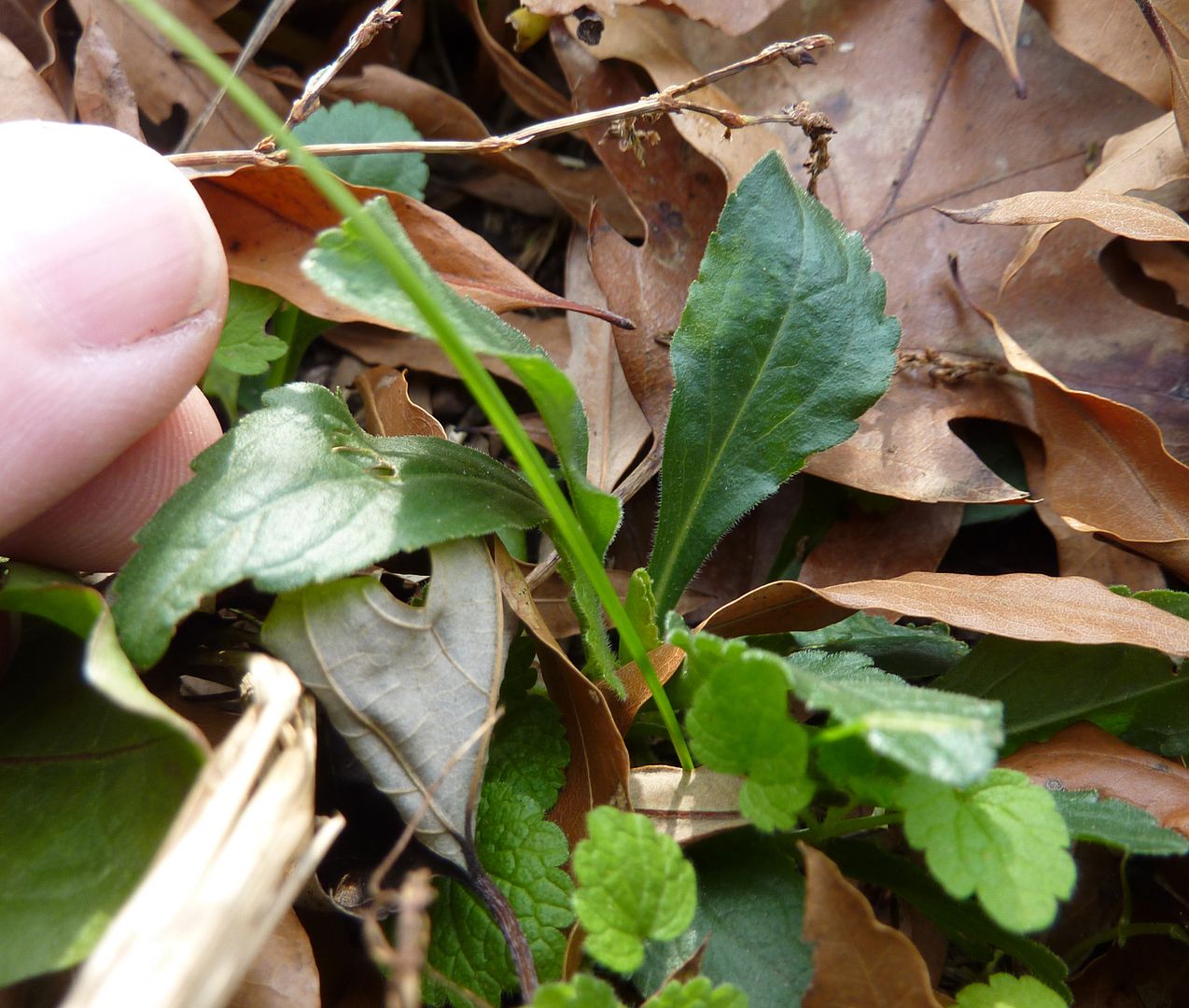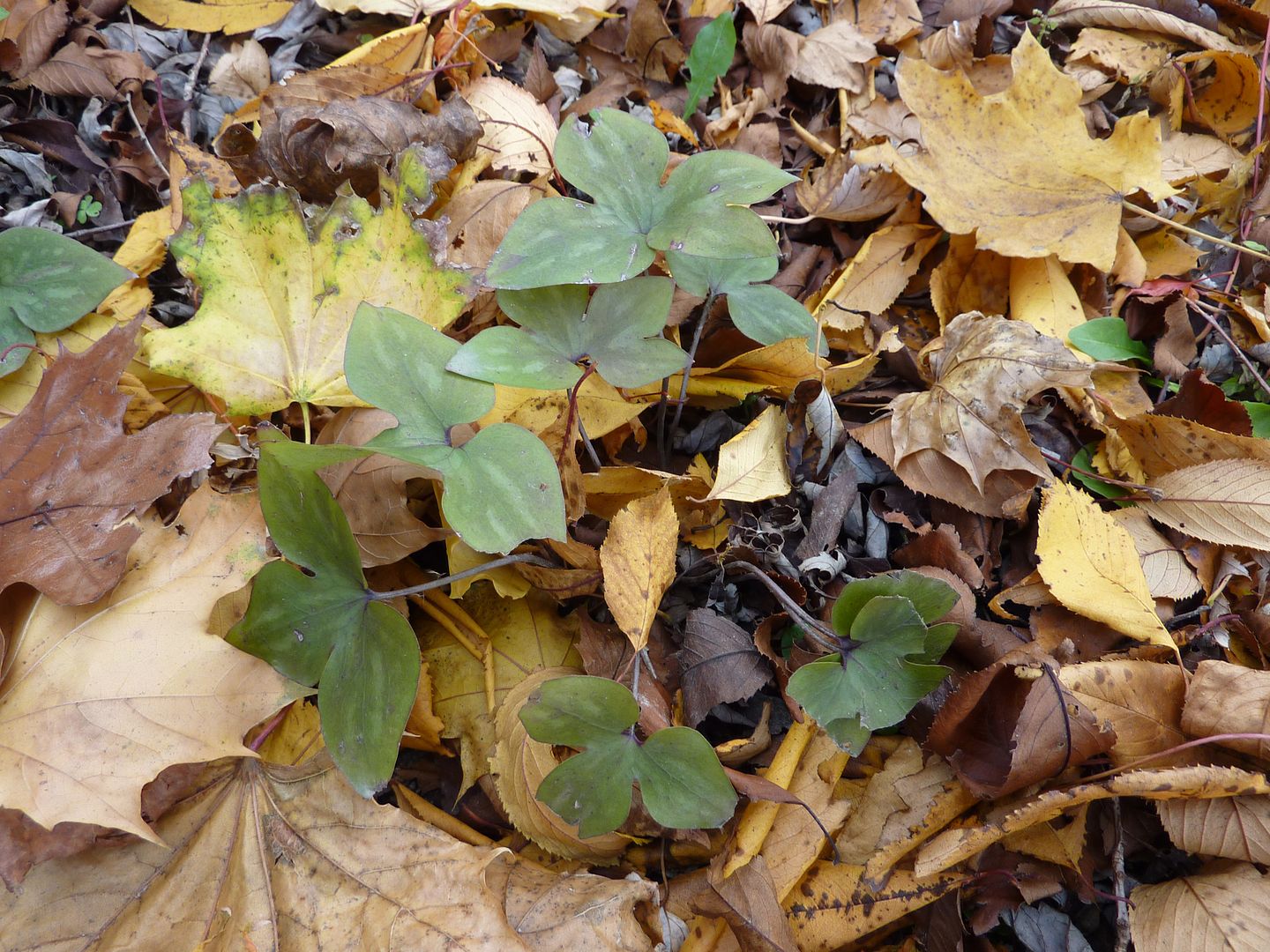Despite winter's eminent arrival, some forbs push out new growth close to ground level. The towering stems shooting out of this plant have served their purpose. Over the past year this Goldenrod has leafed out, flowered, and is now setting seed. Despite this though, next year's growth has already begun.
This can be a good time to catch root suckering plants. If they're spreading in an undesired direction, transplanting or cutting the root at that point could be called for. Waiting until next spring will also work but it's best to catch it early. I'm leaving these here because it's a fairly young plant and I can stand it spreading a little.
This can also be a good time to point out seedlings. Many seeds will germinate the same year and produce a small amount of growth. Here is a young goldenrod plant sprouting through the leaf litter. The contrasting fallen leaf color can help make them easy to spot. To the side of my house I've spotted a lot of thistle plants coming up from when I let it go to seed. I don't mind a thistle or two but there are dozens of plants coming up that I'll deal with next year.
Some plants only produce the leaves to get extra energy. For many species the leaves are only temporary. Cold temperatures will damage a lot of the leaves and new ones will have to be put on next year when it's warmer.
Here a Hepatica plant still has the leaves it's held onto all year. This plant is a semi-evergreen which means these leaves will last most of the winter but die off just before flowering next year. This is a nice plant to have around spring time wildflowers just because the growth helps mark where they're planted. Most spring wildflowers die back to the ground by the end of summer.



